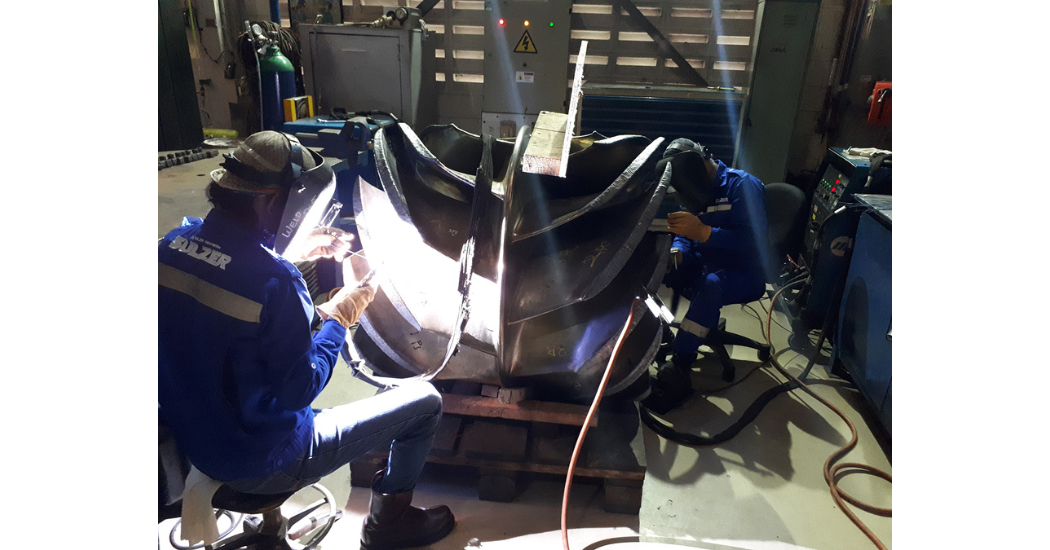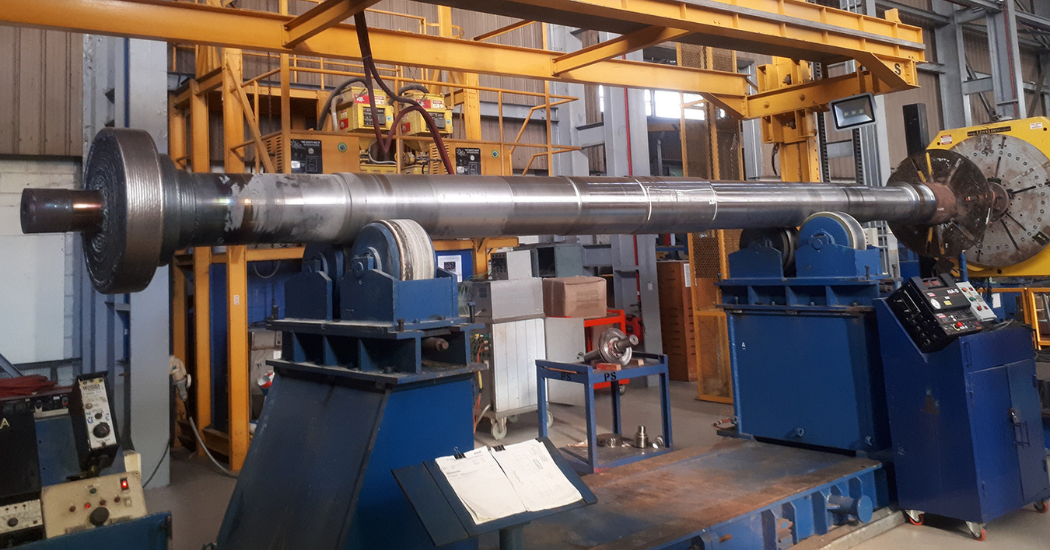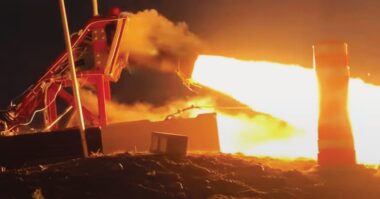Sulzer Indonesia carries out critical repairs for historic hydropower plant in West Java
The Indonesian government is heavily investing in the country’s hydropower capacity to support growth, lower emissions and reduce dependency on fossil fuels. As well as building new installations, keeping existing facilities operational is equally important for this strategy. When a critical hydropower turbine failed at a hydropower plant in West Java, Sulzer Indonesia was able to get the 5 MW unit back online in less than half the time needed for a new turbine to be manufactured and installed.
Nearly a century of reliability
The hydropower plant was originally built in the 1920’s and is owned by one of Indonesia’s oldest hydro power independent power producers (IPP). It consists of three separate installations, supplying electricity to the local community and the wider grid. With the operator having no local back-up system, any unforeseen downtime at any of the facilities results in an electricity shortage.
After almost a century of reliable operation, the support bolts installed on one of the turbine shafts finally failed. This caused the turbine to run in an uncontrolled manner. The turbine shaft split completely in two, smashing the casing to pieces while damaging the turbine tips, runner casings and the bearing pedestal. Unsurprisingly, this resulted in complete turbine failure.

Specialist welding processes were used to clad the blade tips with corrosion resistant material, ensuring an optimum repair.
Reacting to an energy shortage
Requiring an urgent repair to overcome the resulting energy shortage, the IPP approached several independent service providers (ISPs). However, no suitable proposal was forthcoming. This was not ideal, as the electricity shortfall had to be covered from other sources, placing increased stress on the energy infrastructure.
With securing a prompt, high quality repair paramount, the operator approached Sulzer Indonesia. A leading global ISP for rotating equipment engineering services, Sulzer has a network of localized service centers ready to deliver complex repairs and upgrades. The local team in Indonesia offers turnkey services for all types of turbines, with state-of-the-art equipment, advanced repair techniques and highly experienced experts combining to deliver quality quickly.
Sulzer experts inspected the damaged equipment thoroughly, checking dimensions and scanning it to identify the best approach. The company recommended a cost-effective restoration project, with all work to be delivered within 5 months. This was less than half the expected 12-month lead time for sourcing all new equipment. The customer agreed with Sulzer’s proposed approach, enabling work to begin.
World-class welding expertise
The project started with the more complex repair of the broken shaft. In terms of direct replacement, the only option to source a shaft of the correct diameter was to order from overseas. This was unacceptable due to the long lead-time, so instead, Sulzer Indonesia sourced a smaller diameter shaft locally and built it up on the coupling area to the correct size.
This process has been used by Sulzer Indonesia since 2002 as it enables rotors to be weld repaired instead of being scrapped. The technology has been adopted from Sulzer’s Houston Service Center, showing the transfer of expertise through the wider global network. In this case, submerged arc welding (SAW) was used to apply an upgraded, high-strength low-alloy steel weld material, building up the diameter of the shaft. Once completed, the shaft was precision machined to the final dimensions and comprehensively tested.

Machining of the repaired turbine tips.
A turnkey approach to projects
The damaged turbine tips also needed to be repaired. Sulzer used laser scans in conjunction with reverse engineering techniques to ascertain the as-new dimensions. Then, specialist welding processes were used to clad the blade tips with corrosion resistant material, ensuring an optimum repair.
The new shaft and repaired turbine were then reassembled. A replacement sleeve was also manufactured and fitted. Inspections and non-destructive testing (NDT) were conducted, along with low-speed balancing and demagnetization of the complete rotor.
Another challenging aspect of the repair was the smashed casing. Taking the scans and dimensions collected during the inspection, Sulzer reverse engineered the elbow casing. This allowed the team to use metal stitching to connect pieces of the smashed casing together. It was then machined before NDT and a complete hydrotest. The damaged runner casings and bearing pedestals also underwent repairs.
Bringing power to the community
With work complete, the rotor and casing were delivered back to the customer within the agreed project deadline. All in all, the project was delivered in less than 50% of the expected OEM lead time for new components. As a result, the turbine could be quickly returned to operation, alleviating the local energy shortage and resuming supply of renewable electricity to the wider grid.
Delivering the project relied on Sulzer’s world-class welding capabilities and wider engineering expertise to fix multiple, complex rotating equipment assemblies. Experience working with legacy equipment from any brand ensured familiarity with the application and in-depth technical expertise required to repair even legacy equipment which is almost a century old.
The incorporation of material upgrades into the design of the turbine delivered a long-lasting solution that will maximize power generation equipment uptime. The turbine is now expected to operate reliably for at least another 30 years, ensuring that it will remain a dependable component of local energy infrastructure.
About Sulzer
Sulzer is a global leader in fluid engineering and chemical processing applications. We specialize in energy-efficient pumping, agitation, mixing, separation, purification, crystallization and polymerization technologies for fluids of all types. Our solutions enable carbon emission reductions, development of polymers from biological sources, recycling of plastic waste and textiles, and efficient power storage. Our customers benefit from our commitment to innovation, performance and quality through our responsive network of 180 world-class manufacturing facilities and service centers across the globe. Sulzer has been headquartered in Winterthur, Switzerland, since 1834. In 2022, our 12’900 employees delivered revenues of CHF 3.2 billion. Our shares are traded on the SIX Swiss Exchange (SIX: SUN). www.sulzer.com





Comments